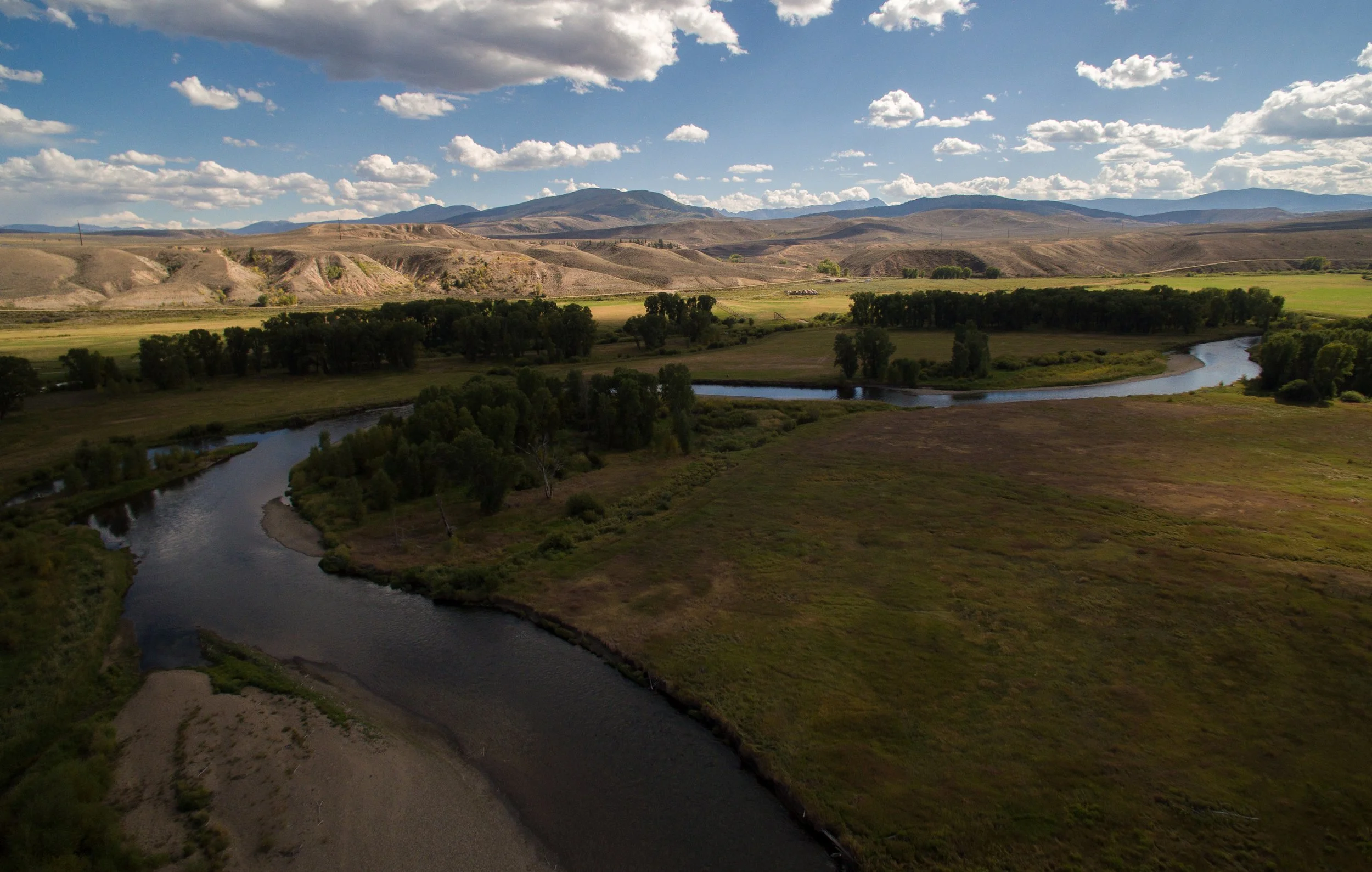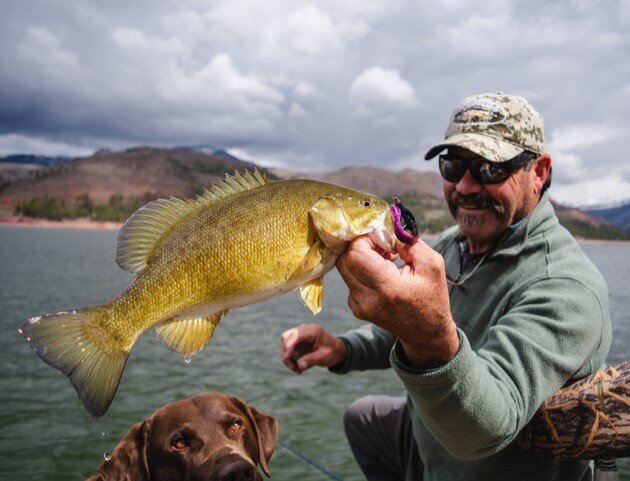Written by Kevin Terry
When I first heard about Sand Creek, I was in my first year of my first real job as a fisheries biologist. I was hired to manage the fisheries program for the Jicarilla Apache Nation in northern New Mexico, and the tribe is a signatory to the range-wide conservation agreement for Rio Grande cutthroat trout. I was at my first annual meeting of the group and it was my first introduction to Fred Bunch of the Great Sand Dunes and John Alves, who at that time was the fish biologist in the Rio Grande for Colorado Parks and Wildlife ( CDOW back then). That was 15 years ago. That’s right, the Sand Creek reintroduction project has been in the works for over 15 years!
When I first saw Sand Creek from the top of Music Pass, I knew instantly that it would occupy a space in my heart for the rest of my life. Why, you might ask, but to understand, you need to stand in that very spot too, as there are no words. This was 2014, a full 9 years after I had first learned of the effort to bring back Rio Grande cutthroat to Sand Creek, and the beginning of year 2 with my job at Trout Unlimited as the Rio Grande Basin Project Manager in the San Luis Valley. I was there as part of a team of researchers alongside Andrew Todd and Ben McGee of the USGS, and our task was to characterize the physical and biological attributes of the watershed through the lens of a fisheries reclamation scope. As we stood there, just before our first of many nights spent in the watershed over the next 5 years, I was overwhelmed with our task but incredibly motivated that such a thing might actually be possible, in a place as pristine and intact as Sand Creek. The first few trips were daunting, the watershed huge and intimidating. But we got to work and slowly chipped away at the tasks. We outfitted streams and tributaries with temperature and intermittency loggers, battling through the lush healthy riparian jungle and mosquito swarms that could carry a baby away. We explored tributaries in near vertical climbs to map the perennial sections and determine if fish were present. We used electrofishing and environmental DNA sampling to determine fish species distributions. We captured fish from the lakes and streams and sent in tissue samples for genetics testing. Through the process our team grew, adding Dewane Mosher, the newly hired biologist from Great Sand Dunes National Park and getting staff support from CPW for mapping the lake bathymetry amongst other tasks.
Each year we became more familiar with the lay of the land, finally wrapping our minds around the expansive watershed and gaining confidence in the physical space. The data was adding to our confidence on the biological side of things too. We learned that most of the tributaries were unoccupied by fish, but instead they contributed clean, super cold water, that was even too cold for successful cutthroat reproduction and recruitment. That meant we didn’t have to treat most of the tribs with
rotenone, securing source populations of aquatic invertebrates to recolonize Sand Creek. This information demonstrates the watersheds resiliency in the face of climate change. Ultimately, this became a driving factor for why Sand Creek is so well suited for re-introduction. Even though the tributaries were found to be too cold, the mainstem was just right as goldilocks would say, benefitting from solar thermal gain at the two lakes in the uppermost sections of the watershed at 12,000 feet in elevation. These lakes are very productive, and our genetics work showed that fish could also reproduce successfully in them. Successful reproduction in lakes is very rare throughout the range of the species, and again added positively to the project’s potential. In fact, the information was so promising, that even before the study was fully complete, the Sand Creek project elevated to the top of the list for Colorado Parks and Wildlife, and the stage was set for a monumental undertaking.
In 2018, our study complete, the details of a treatment plan in the works, the decision was made to attempt to treat the upper portion of Sand Creek in the fall of 2019. Then we got snow, lots and lots of snow, a winter like we hadn’t seen for a long while. This 30-year event was a challenge to say the least, and the lakes didn’t even ice-out until July. A valiant and sincere effort was taken up to try to get it done anyway, but it was just not in the cards in 2019, and the decision was made to postpone.
In 2020 the pressure was on. These projects take so much time and effort (sweat and $$$$$) and we all felt an urgency to get this phase done. CPW, NPS, and TU staff joined up for most of the summer to prepare. We cut trails and flagged routes, identifying springs and seeps. We installed a gauge system and monitored stream flows. Every inch of flowing water was scoured for the presences of fish and importantly the young of year fish emerging from the gravel. Outfitter tents were installed by the Laske family, in preparation of the treatment week. The work was hard, but the team stuck it out. Finally, it was go-time, and 44 people, mostly from Colorado Parks and Wildlife journeyed into Sand Creek during the first week of September 2020. We had a challenging start, with helicopters not able to fly the first day. Plans were modified and there was no giving up. The second day we got after it, treating all of the streams above the waterfall barrier, while the helicopters got running, delivering boats and motors and barrels of Rotenone to the Lakes and base camp. Day three was a repeat of the stream treatment and both of the lakes were treated as well. It was finally done, and all went as planned. An enormous sigh of relief rippled through the troops and we celebrated in exhaustion with a little Colorado whiskey donated by Laws Whiskey. Day 4 was clean-up and de-mobilization, helicopters buzzing around in a flurry and people gathering the gear for the years last trip out.
Personally, this was the single most meaningful and important project that I have been part of in my career. I believe with all of my heart, that Sand Creek will hold this incredible native trout for centuries to come. This is for our children and their children and everyone can experience it, because it belongs to all of us. It is our public land, managed diligently by our National Park Service and the amazing men and women who serve us all in their vital work.
There are too many people to thank for making this a reality. Fred Bunch has been an incredible leader, patiently waiting and guiding a slow-moving ship. Without Fred, this project would never have happened, plain and simple. Dewane Mosher has been an amazing right hand for Fred and the NPS. Dewane and his crew worked tirelessly over the years getting ready for this Project. Nic Medley the NPS fisheries biologist for the region provided incredible support, authoring the fisheries management plan for the park. John Alves, now the senior biologist for CPW, was here in the beginning and he was here in the end too. John and his staff have always kept the door open on this huge project, and when it came down to it, they brought out every tool in the shed and then some. It was incredibly rewarding to share this with John in Sand Creek itself. Mark Seaton and the rest of the San Luis Valley TU chapter team have been incredibly supportive of the project and I am so proud of my chapter for their unwavering support. Raising the money to hire the Laske’s outfitting services was the perfect contribution and a fitting role for good old Valley hospitality. Thanks to Colorado Trout Unlimited and their generous supporters too, for helping the chapter leverage chapter dollars to raise money online. The Laske Family went above and beyond, making things so comfortable, and serving delicious food in a rough place during Co-Vid. There are too many CPW staff to name here, but I need to call out Kevin Rogers for his support over the years. Kevin mapped the lakes, and guided research efforts. My colleagues and friends Andrew Todd and Ben McGee did a fantastic job with the characterization study, which teed it all up. I am incredibly proud of Running Rivers too. This unique non-profit raised over $20,000 for this project! Carrie Tucker, the CPW fish bio in the SE, alongside her crew, did an incredible job co-piloting this project. Lastly, Estevan Vigil, our Rio Grande fish biologist for CPW and his tremendous crew have done an enormous amount of work (and suffered incomprehensible stress loads) to get this project to the finish line. Estevan inherited this huge project and I can’t imagine what was going through his mind the first time we took him into the watershed. Estevan endured with grace under pressure (my high school English teacher would appreciate this Hemingway tribute) dealing with plenty of setbacks and hoops, but he never wavered once. Estevan and his crew should be unbelievably proud. I am so grateful to the entire CPW fish crew. The effort they put forth in the midst of Co-Vid, to bring 40 plus people from around the entire state is simply astonishing. I am so proud of Colorado Parks and Wildlife and thankful to the amazing staff we have in this great state. Because of them, we just might be able to keep our beautiful native fish around after all.
For more information on the Sand Creek Characterization Study, please click here.















